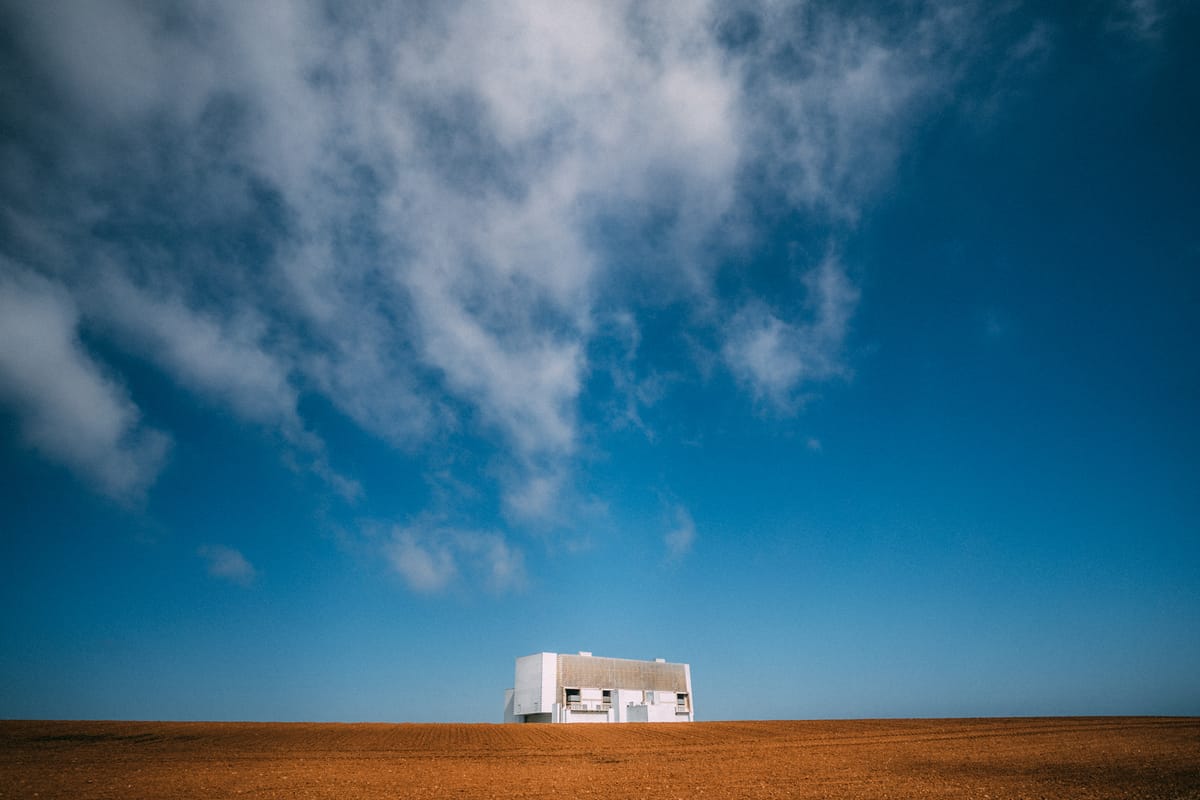Are we Living on Mars?

Traffic roared by as we cycled through what felt like Planet Mars just 30 miles east of Edinburgh. We saw the building from a great distance, a blocky tooth grinning up from the North Sea’s sullen frown. Dark waters danced and churned while the white factory stood nearby, unmoving in its guard of human secrets.
We had a long time to imagine all sorts of things during the long descent down to this monumental build.
Steven guessed it was a nuclear plant, but I let my imagination go into other possibilities. Maybe its the factory of mirrors from Fahrenheit 451, the place built so people could look turthfully at themselves and prevent the mistakes of society from repeating again. Or maybe its the headquarters of the elusive Big Brother from Nineteen Eighty-Four, or the Ministry of Love where the novel’s main characters were tortured back into complacency.

Or maybe it’s Torness nuclear power station providing 2.7 million homes with low carbon electricity. It was built in the 1980’s so maybe my Big Brother theory is right, at least in a parallel universe, but the reality is that many people are powering their devices from this controversial power plant. Over 4,000 protestors occupied the site before it was built in the 1970’s and many signed a declaration to prevent its construction with non-violent action.
Mother Nature has also rebelled over the years, sending seaweed and jellyfish to block seawater intake systems on different occasions. I doubt the jellyfish were happy to go.
We’ve passed many industrial sites throughout our journey and this one stood out with its dry earth foreground reminding us of Mars. Much of the Earth is drying up, a fate that happened to Mars millions of years ago. Here on this planet we have a lot of intelligence to change that fate.



Industry, massive farm fields and industrial animal agriculture, they felt cold and sad.
We can’t wait to explore the alternatives and talk about our own mobile power systems too, the incredible Sunjack power.

It felt ironic to cycle into Dunbar on this same day and just so happen to pass by the birthplace of John Muir. He’s known as an early environmentalist who helped create the national park system of America, speaking for Nature from his beloved rock in California. I visited that rock years ago and standing under his birth home I wondered what he would think of our world today.


Muir would certainly face sharp criticism in light of his racist attitudes and discriminatory way of talking about Indigenous peoples. The places he wandered through were not empty wildernesses, but full of rich indigenous history and beliefs intertwined with the mountains and rivers.
Those who already dwelled on the lands of today’s USA held many prophesies about what the future would lose. Chief Dan George of the Tsleil-Waututh Nation, born in 1891, said,
The time will soon be here when my grandchild will long for the cry of a loon, the flash of a salmon, the whisper of spruce needles, or the screech of an eagle. But he will not make friends with any of these creatures and when his heart aches with longing, he will curse me.
Have I done all to keep the air fresh? Have I cared enough about the water? Have I left the eagle to soar in freedom? Have I done everything I could to earn my grandchild's fondness?
These very life forces we depend on are threatened by our own hands, but there is much we can do to heal our bond with Nature, if we want to preserve Mother Ocean and the eagle’s freedom.
Written by Karla Sanders @karlasandersart | Photos by Steven Tiller @steventiller
